Camphor Laurel Tops and Tables
I've made many a virtual friend over the years. Russell Morris is one from down under in Australia. He lives on the Gold Coast in S.E. Queensland.
Russell works with wood all the time and he wanted to share this project he's just completing.
I couldn't resist sharing it with you.
After you read Russell's comments, you might decide to contact him about making some tops or tables for you. Here's his contact information:
Russell Morris
geoflex AT SIGN hotmail.com
Tel. + 61-(0)7 5575-9572
Mob. + 61-(0)412-07-2234 (Gold Coast, Queensland Australia)
Here's Russell's commentary about what you see in the photos:
"Hi Tim,
Thought you might be interested in these photos. While I was recovering from my broken leg, I worked in the The Timber Slab Man's factory until I was OK for clambering around my sawmill.
I really enjoyed my time there. I learned a lot about finishing timber and making furniture etc.
One of the last jobs we did. (I did all the sanding, filling etc. in preparation for the final three spray coats.
It's a three-piece-kitchen bench top with sink cutouts for a high-end kitchen.
It's made out of a hardwood timber called Camphor Laurel. (Very lightweight for a hardwood though.) There were some big fissures and a big split in one end which we deliberately left as a rustic feature.
The owner wanted me to chisel out the splinters along the split, but I left them there as I thought it would look better leaving them there as a feature. The split goes right through, and we filled all the fissures up with clear casting resin before sanding them back. The resin is so clear that it looks like there is nothing in the crack. If you hold your hand under it, you can see right through it.
Everyone who saw it couldn't help but reach down to feel it, and was surprised that you could not feel the joint even though it looked as if there was a great big split in the wood. If you closed your eyes, you couldn't feel where the joint was.
All the edges not up against a wall are natural edges. The timber is about 2 inches thick."
Russell Morris
Below are his photos. Following the photos is a description of the process that was used for making these tables.
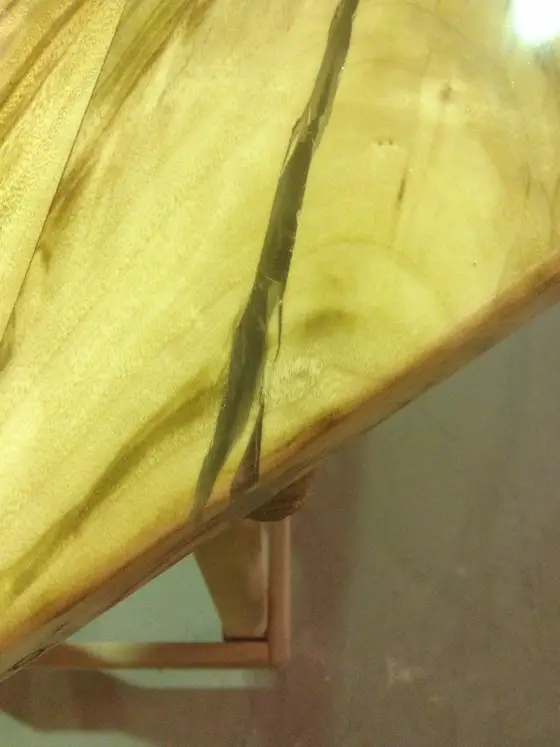
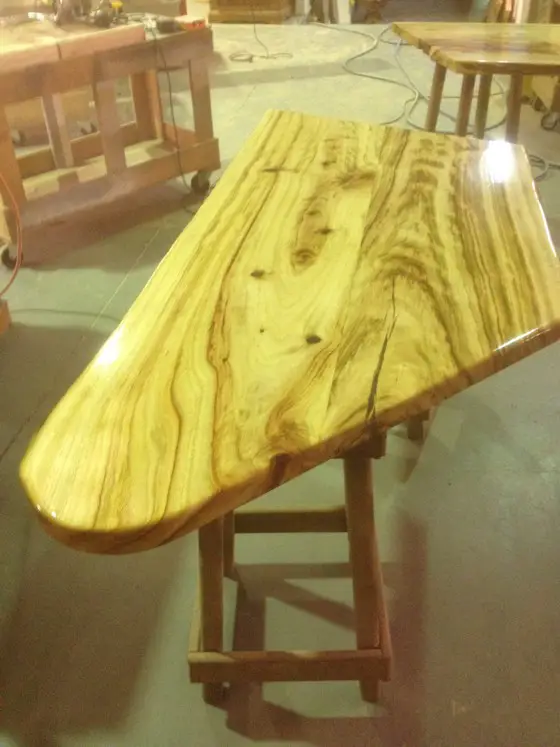
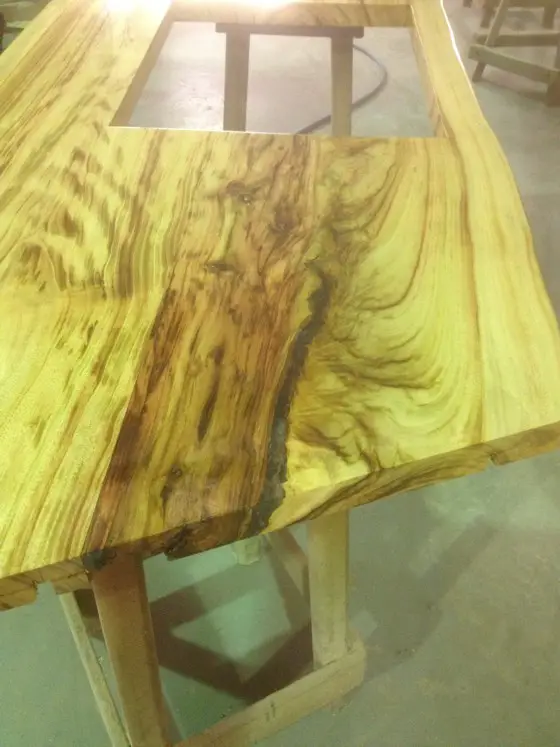
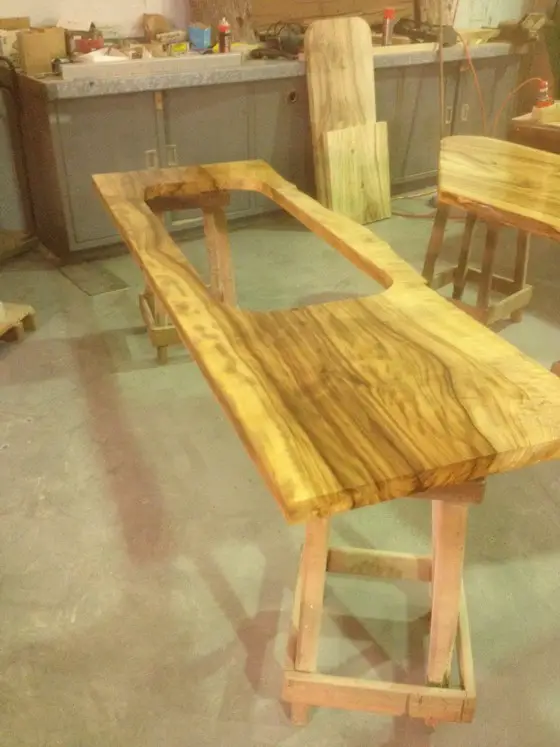
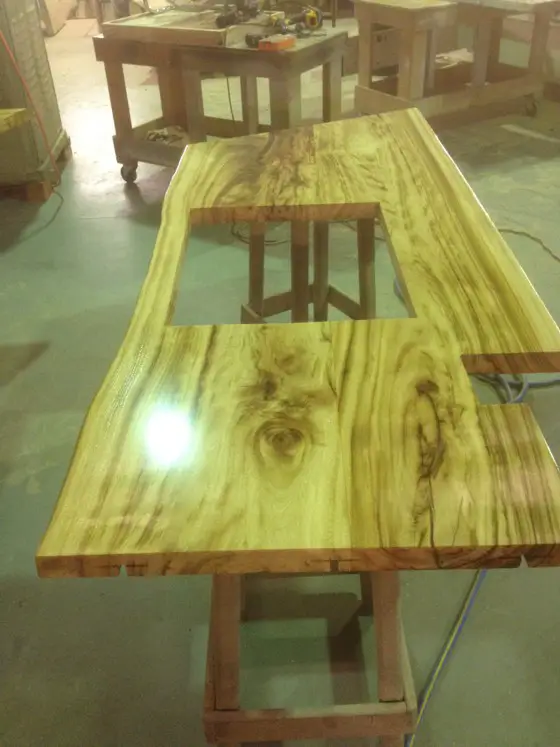
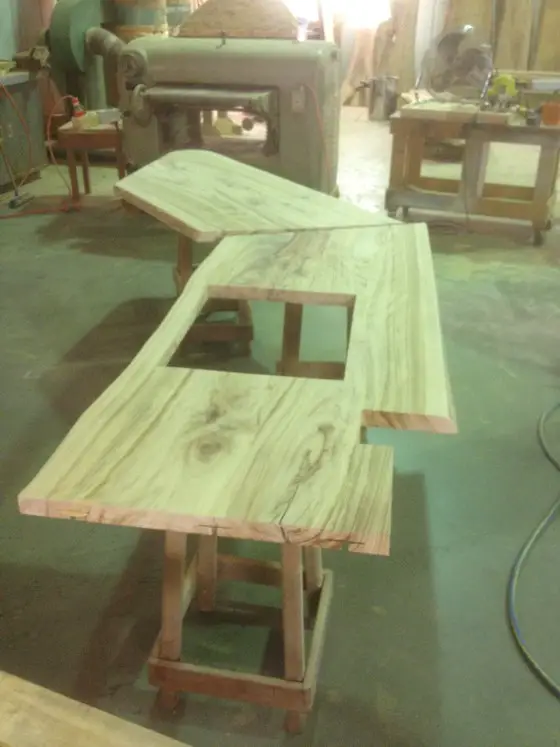
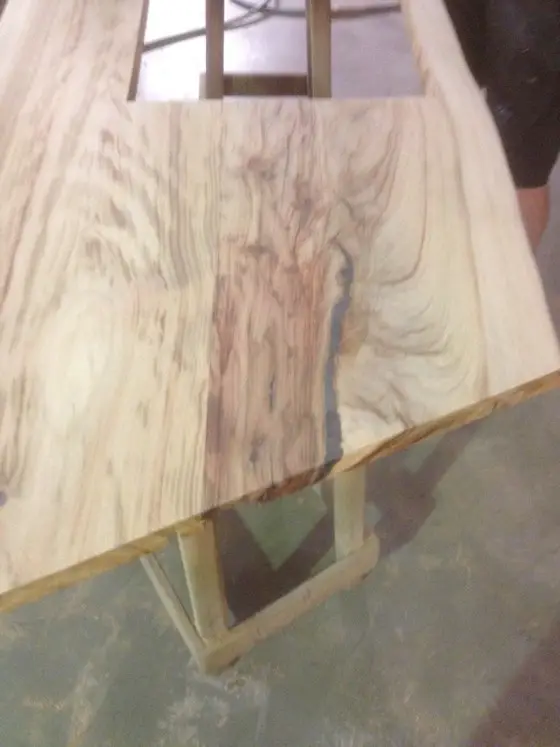
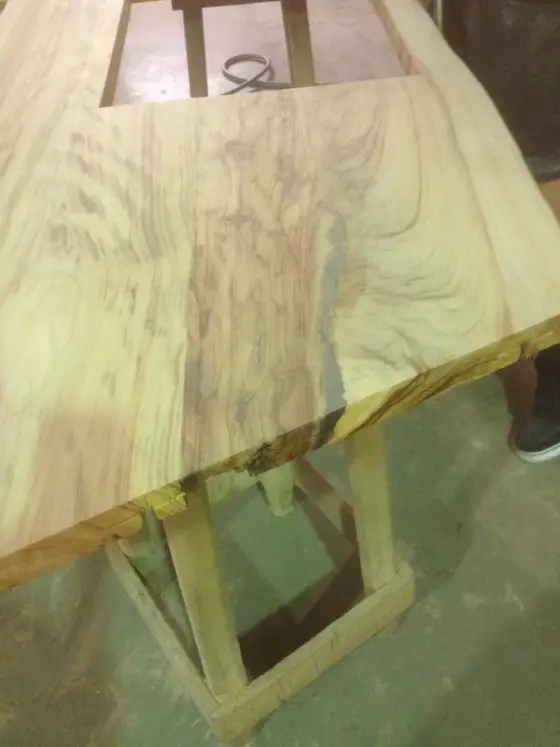
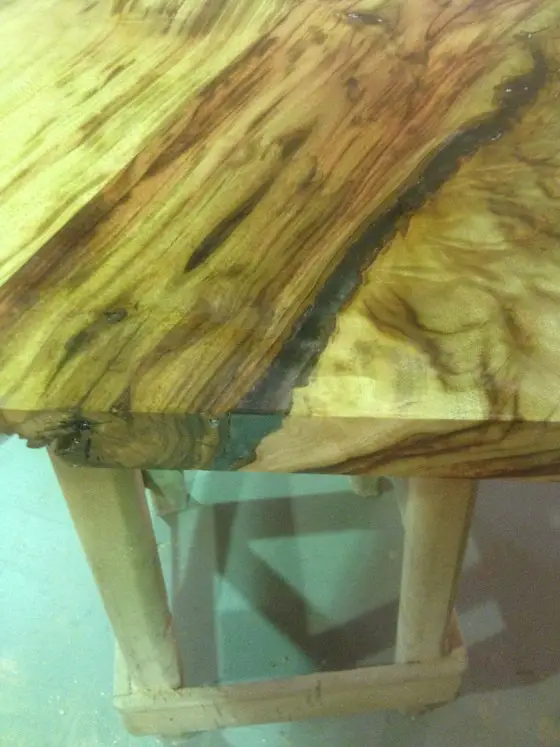
Russell's comments continue below.
"The way he normally designs the tables makes it a piece of cake to flat pack like something from Ikea.
The legs at each end are usually cut from bark to bark slabs the same as the top. Often cut from trees with a fork.
Then another slab is cut to go between the legs, and is through mortise and tenoned at each end. Wooden wedges tapped into each end hold the bottom three pieces together. Usually no metal fastenings at all are used. All you have to do is tap the wedges out to disassemble it, and tap them back together to reassemble it. It can only go one way, and only takes a minute or two.
The top is simply screwed on top with the aid of dinky little metal brackets. Again this takes about two minutes to remove the four screws. An absolute piece of cake. The tops are about the same weight as a similar thickness of laminated counter top material. About half the weight of most Aussie hardwoods.
Customers often get us to swap the tops around to get a top/bottom combination that they like. Since each piece is so different, it is a matter of taste as to which combination suits best.
Wrap the pieces up in bubble wrap, and you can pack up a whole container of them easily.
For simple book shelves etc., he usually simply uses recessed heavy duty batten screws concealed with bits of wooden dowel.
Raw Camphor Laurel slabs are the material of choice, but he uses all kinds of other timber as well. Mostly Aussie hardwoods.
Camphor Laurel is a tree that was introduced from East Asia as a street avenue tree back in the 1800's. They grow very large, and have beautiful canopies. The wood is extremely aromatic. ... To the point that if you turn it on a lathe, you need a fan to blow the fumes away or they can literally be overpowering.
The workshop has an amazing smell of Camphor, especially when we are thicknessing material. Even after many years of everyday use, a Camphor Laurel cutting board still smells of Camphor every time you cut it. It is a wonderful smell in small doses.
I came home every day smelling of Camphor. (I have almost no sense of smell, but Camphor is one smell even I notice when I am working with Camphor Laurel timber!!!! I lost most of my sense of smell when a Chlorine gas pipe broke in a public swimming pool chlorination plant.
Twenty-six kids were carted off to hospital, but I was the only stretcher case. It nearly killed me, but it did burn out most of my sense of smell unfortunately. If it was an indoor pool, a lot of people would have been killed, but fortunately it was outdoors. I just happened to be sitting on the steps of the pump shed, and all the fumes came out under the door I was sitting with my back against warming up in the sun after getting cold in the water. So I copped the worst dose.)
The Camphor in the wood gives it special characteristics. It is the best material on the planet for making cutting boards. That is what we make from the off-cuts. Bacteria do not grow in the knife cuts in the wood, so it is more hygienic than plastic cutting boards. The Camphor kills them.
Unfortunately the tree has escaped, and grows and multiplies like crazy in this sub tropical climate. Nothing eats its leaves or anything, but it is exceptionally fertile, and our native forests are being overcome by vast numbers of Camphor seedlings. You cannot easily kill it. If you cut the tree down, it just grows from the stump or roots.
The sugar mill down the road is powered by electricity generated by burning Camphor laurel that is hauled from surrounding areas. Vast areas of farmland are being taken over by the bloody stuff. It is very hard and expensive to control and remove. It is classified as a noxious weed, and you can be fined for not trying to control it on your property!!! It is an environmental disaster.
But it has wonderful wood to work with. Absolutely beautiful, and easy to work.
In Japan, where the cold winters prevent it from going to seed easily, it is usually grown around Temples and Shrines, and you often see magnificent specimens in parks. They call it Kuso no Ki in Japanese.
Anyway, glad you are impressed with the bench tops!!!"
14 Responses to Camphor Laurel Tops and Tables